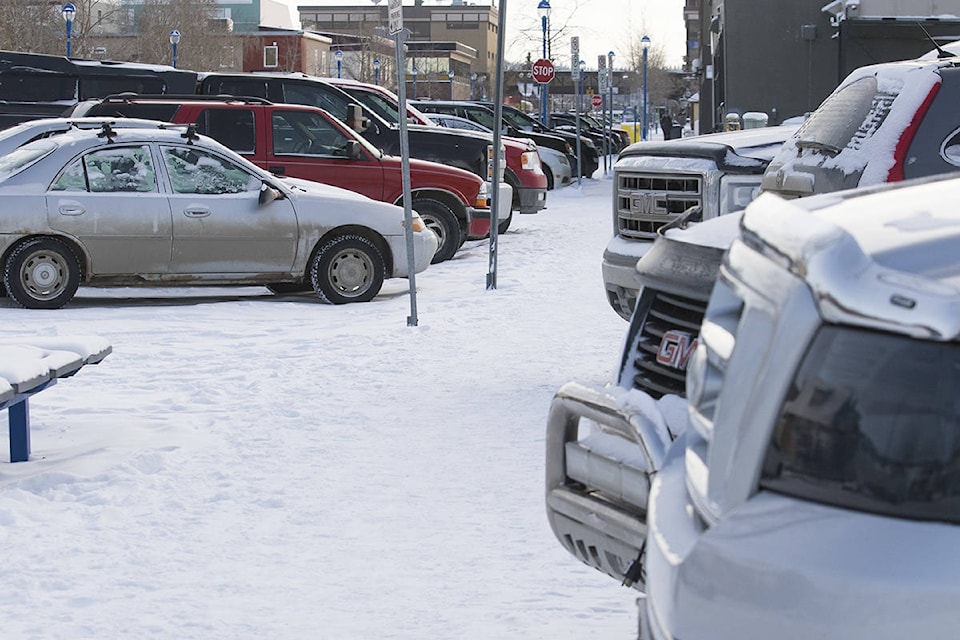In a lot of smaller Canadian cities, building a giant downtown parking garage is a concept that seems to recur like a bad rash.
With the city embarking on a new study of downtown parking demand — the first since 2011 — Whitehorse is no different. You can expect to hear renewed calls for the city to expand the amount of parking available downtown.
This would run counter to the city’s established policy of reducing demand for parking by encouraging ride-sharing and other forms of commuting. But there’s an election coming this fall, and who knows what kind of pandering and back-of-the-napkin policy will get thrown around once politicians hit the hustings.
Arguments about parking tend to get distorted by the perception that there aren’t enough spaces. But it’s simply untrue.
Per the city’s 2011 Downtown Parking Management Plan, there are 4,400 parking spaces in the city centre, including parking lots, metered stalls and free street-side spaces. At absolute peak demand, the study found, 90 per cent of those spaces were full, and the average occupancy was 64 per cent.
In essence, the consultants concluded, walk a block or two and there’s plenty of places to park.
What people generally mean when they complain there’s nowhere to park is “There’s no free parking directly adjacent to the place I want to go at the exact moment I want to go there.” To a degree, that’s understandable. We’ve all been there. It’s -30 C, there’s some goof straddled across two spaces (that one seems to happen a lot), you’re in a hurry.
But this is not the basis for sensible parking policy. The city has taken a few steps to moderate parking demand downtown and more are coming. They include new standards for downtown developments, including parking maximums.
The idea of a parkade has been floated repeatedly over the last 20 years, and each time has gone nowhere. That’s in part because it’s simply a waste of money. A 2008 city report found that a parkade would cost some $50,000 per stall. For an 80-unit garage, that’s a cool $4 million.
The City of Whitehorse has no business spending that kind of money on a house for cars, and, let it be noted, has no plans to. But should the private sector float such an idea, the city should still send them packing.
The real crux of this issue is philosophical: Should the city be trying to cram ever more cars — most of which sit empty all day — into the downtown core? Transportation researchers in the United States have found that cities that provide more parking spaces end up creating more traffic.
You can see this at the parking lot at the Canada Games Centre, which is often pushing capacity even during off-peak times. When there’s a major event at CGC or Mount MacIntyre, the result can be full-blown parking chaos. It’s not clear how the city could build more parking there, even if it wanted to, without a massively expensive construction project.
This is what transportation planners call induced demand: more parking creates more traffic, more traffic creates demand for more and wider roads, which creates more traffic, which creates demand for more parking and the expectation for governments to build all this infrastructure. (It’s amazing how many people who fancy themselves fiscal conservatives think this sort of snake eating its own tail is a good idea.)
Plenty of American cities — and more than a few Canadian ones — are littered with hulking concrete monuments to the age of automobile dominance. Whitehorse, because of its small size and remote location, has avoided many of the worst pitfalls of 20th-century urban planning that a lot of cities are now spending huge sums to get rid of. Our city will grow whether or not we want it to, and we have the opportunity to learn from the missteps of others.
We haven’t completely choked our downtown with cars. Indeed, we’ve started to roll back some of the policy biases that favour automobiles. I’d like to see the city get even more bold: taking steps to calm down the death race that is Second Avenue would be nice.
But it’s just as important to avoid unforced errors. A downtown parking garage would be a massive, spectacular mistake.
Contact Chris Windeyer at editor@yukon-news.com
